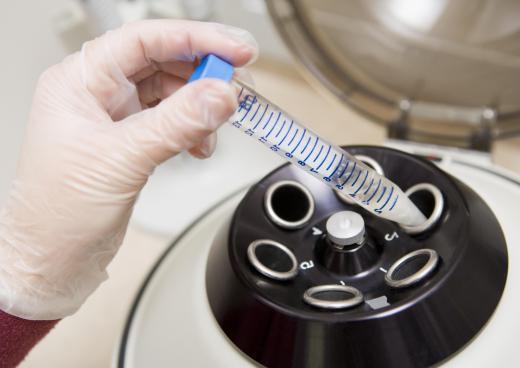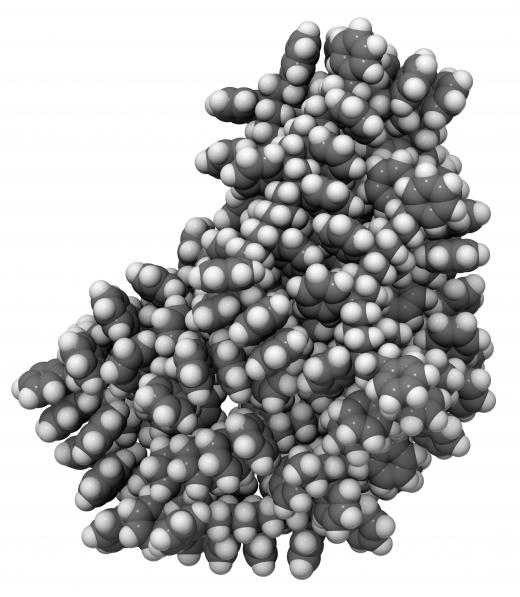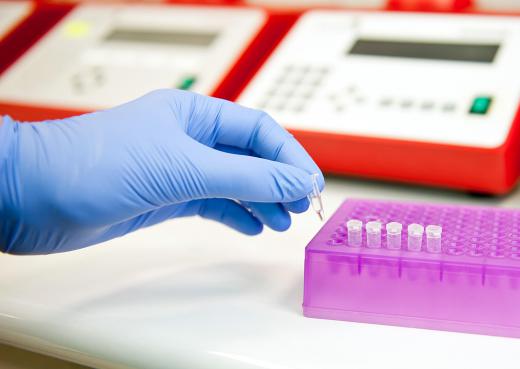What Is an Electrophoretic Mobility Shift Assay?
An assay is a test designed to separate a cell's original pieces into parts that are easy to identify. Electrophoretic mobility shift assay is an experiment that uses electricity to move macromolecules, like proteins, through a gel matrix to cause a separation between the different macromolecules based on size. Like a car battery, the negative and positive ends are on opposite sides of the electrophoretic mobility shift assay, or gel shift assay. This causes electricity to attract the macromolecules based on charge. Each macromolecule moves at a different rate, as smaller ones experience less interference from the gel.
Several steps are required to set up an electrophoretic mobility shift assay. The macromolecules that need to be separated must be prepared first. Most macromolecules are obtained from living cells and require specific procedures. Obtaining the parts to be separated often requires a centrifuge and a chemical reaction that breaks down the cells. The centrifuge will spin a vial at high speed and form a pellet of the macromolecules needed. This is dissolved and often a color or other label is added to help track the gel shift assay.

The gel, sometimes called the bed, must also be freshly made from a precise mixture of powdered agarose and water that turns quickly from liquid to gel. Commonly an electrophoretic mobility shift assay will have several lanes for separate assays, which are used to compare different macromolecule mixtures. One lane is always set as a control and usually has only one kind of macromolecule.

The power source should be selected carefully and is not connected until everything is ready. The amount of time the power is on determines the mobility shift of the macromolecules. It is important to separate the pieces enough for proper analysis. If the power is not properly timed, future comparisons will be inaccurate as well. The direction of the macromolecules will be determined by what charge they possess naturally — most move toward the negative end.

Simple genetic tests and protein analyses are commonly done with an electrophoretic mobility shift assay. This is displayed by different shifts in different lanes. If an interaction occurs, the macromolecules combine and run slower through the matrix compared to the control lane with only one macromolecule. Gel shift assays are used to quickly eliminate or confirm genetic results that complicated methods could take longer to complete. They can also determine if antibodies, an immune system macromolecule, stick to proteins which can be used to fight bacteria and viruses.
AS FEATURED ON:
AS FEATURED ON:













Discuss this Article
Post your comments